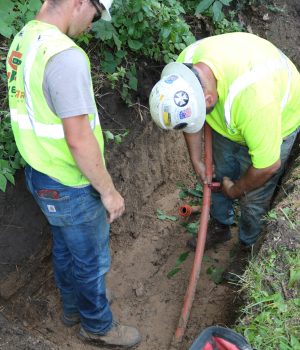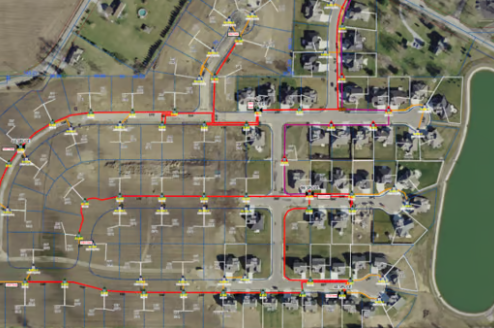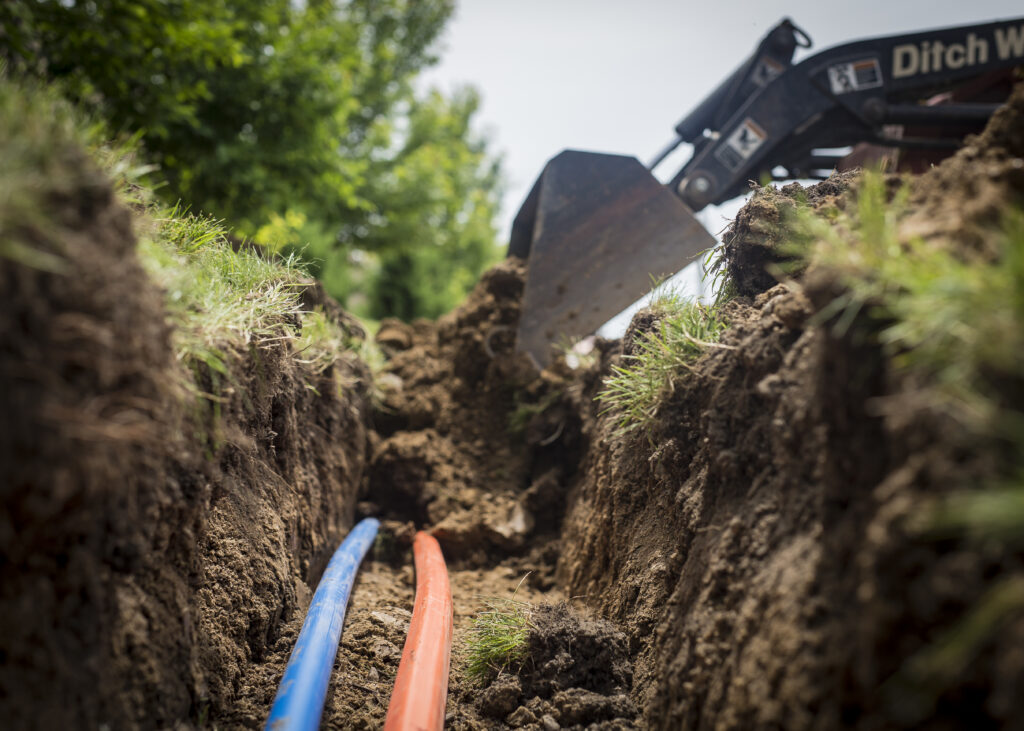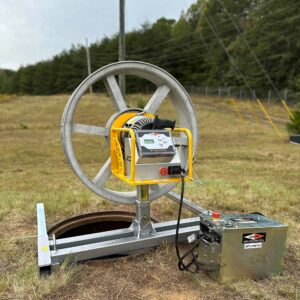No products in the cart.
Building a Nimble Broadband Business in 2024
Home Building a Nimble Broadband Business in 2024
- Home
- Resource Hub
- Millennium Blog
- Building a Nimble Broadband Business in 2024

Building a nimble broadband business in 2024
Heading into Fall 2023, we saw a slowdown in materials ordering as well as capital equipment rentals and leasing as the summer fiber construction season came to a close. But, don’t hold your breath for long because 2024 is already moving at breakneck speed! This year is an incredible year to be in the broadband fiber industry as fiber network owners race to apply for Broadband, Equity, Access, Deployment (BEAD) Program funding and start fiber construction. With some states possibly awarding BEAD grants as soon as the beginning of Q2, we’ll soon see the start of those planned fiber construction projects before we know it.

Macroeconomic Trends Impacting Fiber Construction Projects
At the start of the 2024 construction season, broadband businesses are still facing inflation and uncertainty, which means it’s just as important to consider how to build a more nimble broadband business as it is to figure out project funding.
Trends impacting fiber construction:
– Low unemployment makes hiring longer and more difficult
– Higher interest rates and increased cost of building and maintaining a fiber network
– Competitive wages are needed to attract and retain good employees
– High cost of construction equipment
Inflation may make you nervous about where this market is headed and how it could impact your broadband business. Every week though, new opportunities soften those doubts as we arereminded to capture lightning in a jar. This past December, the Federal Reserve even hinted at three potential interest rate cuts this year that could ease the difficulties we’ve been facing as an industry.
Strategic Insights for Broadband Businesses
If you’re looking to nurture a nimble broadband business, finding ways to stretch your budget is one important way to start. Making the most of your cash flows can help tide you over until broadband grant funds are disbursed, company cash flows have improved, or you’ve secured alternative funds for a project. You can get inspiration on how to reduce your capital expenditures by looking at the Commercial and Industrial Construction (C&I) and Electric Utilities industries, two relatable for broadband businesses. C&I contractors seem to manage the risk of significant economic challenges every 3-4 years and, as a result, have made the C&I industry one of the most resilient at overcoming economic challenges. A major factor contributing to their ability to handle turbulent economic conditions is their usage of rentals and leasing. Recent equipment rental revenue data on C&I construction rentals shows percentage growth reached 10.2 percent in 2021 and 12.7 percent in 2022 (ARARental.org, 2022). In contrast, the percent growth in 2023 is expected to be 4 percent, 2
percent in 2024, and 3 percent for both 2025 and 2026 (ARARental.org, 2022). Part of this double-digit growth can be attributed to a post-pandemic construction boom (ARARental.org, 2022).


While Electric Utility companies and contractors operate in a mostly stable industry, natural disasters do add unpredictability into the mix, and scaling to restore power requires being prepared to take on jobs at the moment they arise. While one organization is shopping and acquiring equipment, another is already on the job site, restoring power and earning revenue with a rental. Equipment rentals and leasing give both C&I and Electric Utilities the ultimate flexibility to tackle new opportunities with less financial risk. Another option for businesses is purchasing used equipment, which can provide a cost-effective alternative and provide quick access to the equipment. The big takeaway for broadband business is that nimble construction companies reduce their capital expenditures through alternative procurement options.
Managing the Accelerated Pace of Fiber Construction Projects
Fiber construction sees a natural ebb and flow with seasonal weather changes. However, the flow of work in the next five years will be truly unprecedented. Thinking ahead to the inevitable influx of work stemming from Broadband, Equity, Access, and Deployment (BEAD) funding, reconsider your capital equipment strategy to remain adaptable in this time of explosive growth. Purchasing that equipment you had your eye on may present a missed opportunity cost, or once that work is done, your organization will be carrying the extra overhead cost, or spending time reselling the recent purchase. In the meantime, another organization has already pivoted to another opportunity the day the rental was returned.

Using Fiber Equipment Acquisition Strategies to Stay Nimble
Thinking of rentals and leasing as a strategic capital equipment move may be a challenge for our hard-working, gritty telecom industry that has a preference for buying fiber construction equipment outright. However; this mind shift can help you conserve cash to keep your broadband business agile for other opportunities arising from unprecedented investments in broadband infrastructure.
RENT
Renting fiber equipment gives you the chance to use OpEx expenses and move from project to project with no maintenance and no risk. If you have a long-term project of 6 months, Millennium Equipment lets you rent the equipment at a discount.
LEASE
Looking to purchase equipment but want to use only a certain amount of your CapEx, Millennium Equipment offers lease-to-own financing. With our capital sales lease, you can make payments of 6, 12, 18, or 24 months on the equipment you’re looking to acquire. This option is great for cash flow, and it also offers the same tax write-offs as purchasing it outright.
R.P.O.
Choosing the Rent-to-Purchase option allows you to put 50% of your monthly rental cost towards the purchase of the machine you’re renting. It is a great way to test drive that equipment and a great way to get in and get out if you only need it for a short project.

BUY
Buying used equipment offers you significant cost savings, often available at a fraction of the cost of new equipment. It allows your business to acquire necessary tools within budget constraints and provides immediate access to equipment.
Get the equipment you need today. Connect with an expert
Pre-Covid broadband construction was a fairly steady and predictable industry. It’s undeniable that times are good within our industry, but broadband businesses and fleet managers are still challenged to build an organization that can remain flexible through this time of explosive growth. As broadband businesses scale their operations and try to capture lighting in a jar, the question to ask yourself is: How am I driving sustainable growth?
Setting up Your Next Fiber Construction for Success
Making capital equipment a part of your strategic business plan is just the tip of the iceberg when it comes to creating an adaptable broadband company. We recommend checking out these other blog articles chock full of strategic and tactical advice.
– More on Fiber Equipment Strategies: “Stretch Your CapEx Budget with Fiber Equipment Rentals and Leasing”
– Funding: “10 Things to Know Before Applying for BEAD Funding”
– Network Design: “5 Tips for Future-Proofing Your Fiber Network”
– Materials & Construction Planning: “7 Fiber Construction Best Practices to Connect Customers Faster”
– Purchase quality used equipment

- Feasibility Studies & Network Design Plans
- Financing & Grants
- Project Resource Management
- Material Supply & Logistical Planning
- Equipment Leasing & Rentals



